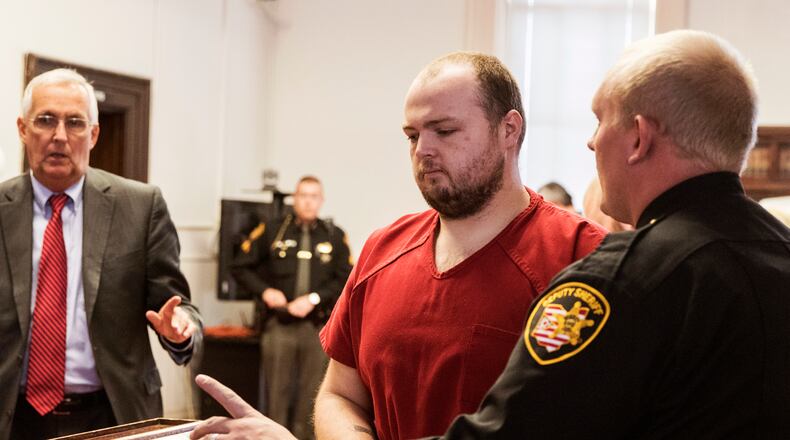George Wagner is the first of the four to go on trial. Here are five things to know about the case:
1. Brother, mother to testify
Angela and Jake Wagner have already pleaded guilty to their roles in the murders. Their plea deals require them to testify against the other two when they go to trial, in exchange for the death penalty to be taken off the table for all four defendants.
Jake Wagner last year pleaded guilty to 23 counts in relation to the murders. Wagner’s sentence was suspended until he cooperates and testifies against the others. If he does to the state’s satisfaction, Wagner will spend the rest of his life in prison and all four will be spared the death penalty.
Angela Wagner accepted a similar deal last year, with prosecutors dropping murder charges against her but recommending she spend 30 years in prison for helping plan the killings.
2. Custody battle behind dispute
The Dayton Daily News was the first to reveal that a custody battle was at the center of the dispute that led to the killings.
Jake Wagner had a daughter with Hanna Rhoden who was 2-years-old at the time of the murders. Six days after Hanna Rhoden and seven others were killed, Jake Wagner filed for custody of the girl.
Using custody documents and other records, a Dayton Daily News investigation found a fight over the girl was at the heart of a fierce dispute that prosecutors believe escalated to murder.
The daughter was not there when the killings were carried out. But three children, ages 3, 6 months and 4 days, were. The three were left alive at the crime scene.
3. The victims
In addition to Hanna, the victims were her father Chris Rhoden Sr.; mother Dana Manley Rhoden; brothers Chris Rhoden Jr. and Clarence “Frankie” Rhoden; her uncle Kenneth Rhoden; cousin Gary Rhoden; and Frankie’s girlfriend Hannah “Hazel” Gilley.
They were killed “execution style” at four separate homes on three different properties in rural Pike County the same night on April 22, 2016. Investigators say they were shot a total of 32 times, mostly in the head.
4. Largest investigation in state history
The Wagners were arrested in November 2018, more than two years after the killings. The family moved to Alaska briefly in 2017 but returned to Ohio.
Pike County residents were giving up hope that the crime would be solved, though then-Ohio Attorney General Mike DeWine — now the governor — and local law enforcement authorities said the investigation was still making progress.
It was the largest criminal investigation in state history. Investigators combed through 1,100 tips from the public, conducted 550 interviews, tested more than 700 pieces of evidence, and served more than 200 search warrants, subpoenas and court orders.
But the final piece of evidence that led to the indictments of the Wagner family and their arrests came in October 2018, when, DeWine said, authorities confirmed the existence of a homemade silencer the suspects are accused of building.
At the time of the arrest, DeWine described a sophisticated scheme, saying the suspects bought ammunition, a device to catch spent shell casings, a “bug” detector, and specific shoes from Walmart as they prepared to commit the crimes.
Investigators haven’t released information on how exactly they believe the Wagners perpetrated the murders and covered up their tracks. That information may emerge in trial testimony.
5. Massive media attention
The murders made international news, and the trial likely will as well.
Among the multiple outlets covering the trial, Court TV has announced it will stream the trial gavel-to-gavel.
Residents of the small rural county — Pike County’s population is a little over 28,000 — expressed frustration in interviews with the Dayton Daily News in the past with how their community was portrayed after the murders, and how disruptive the media onslaught was.
About the Author




